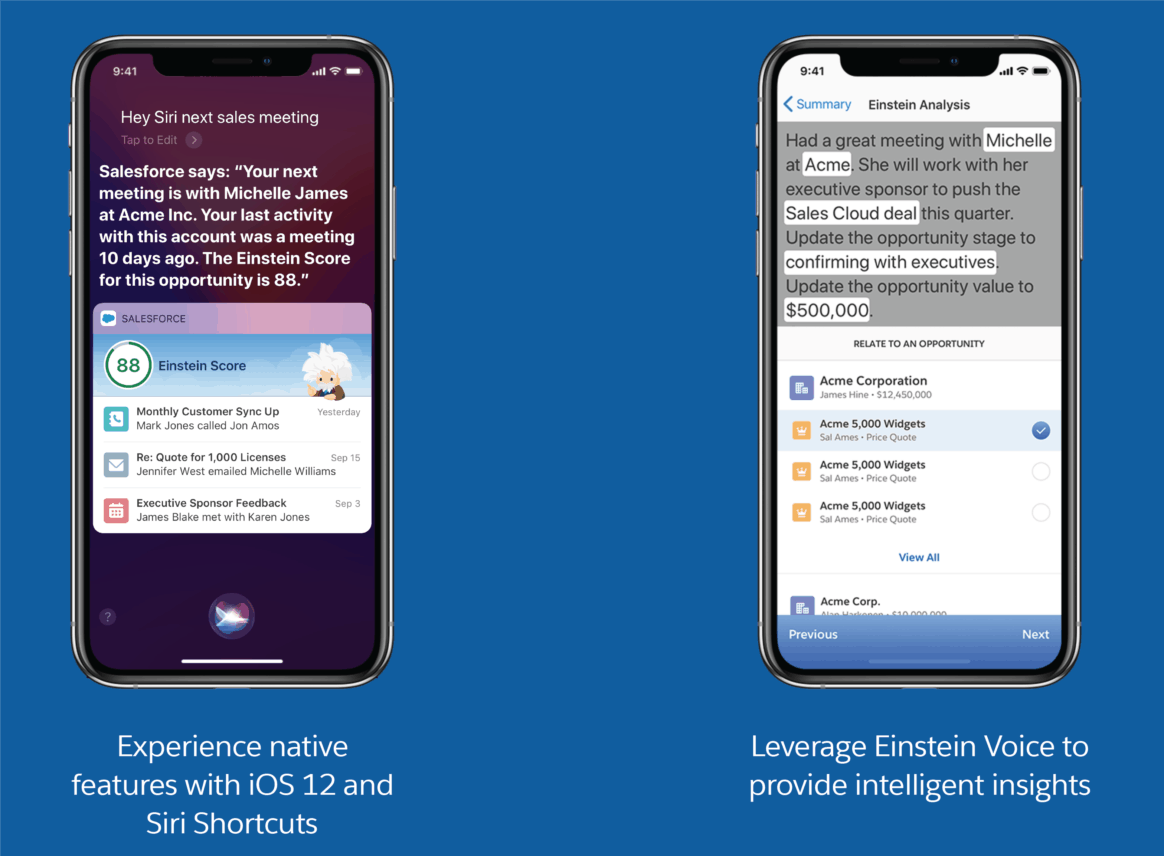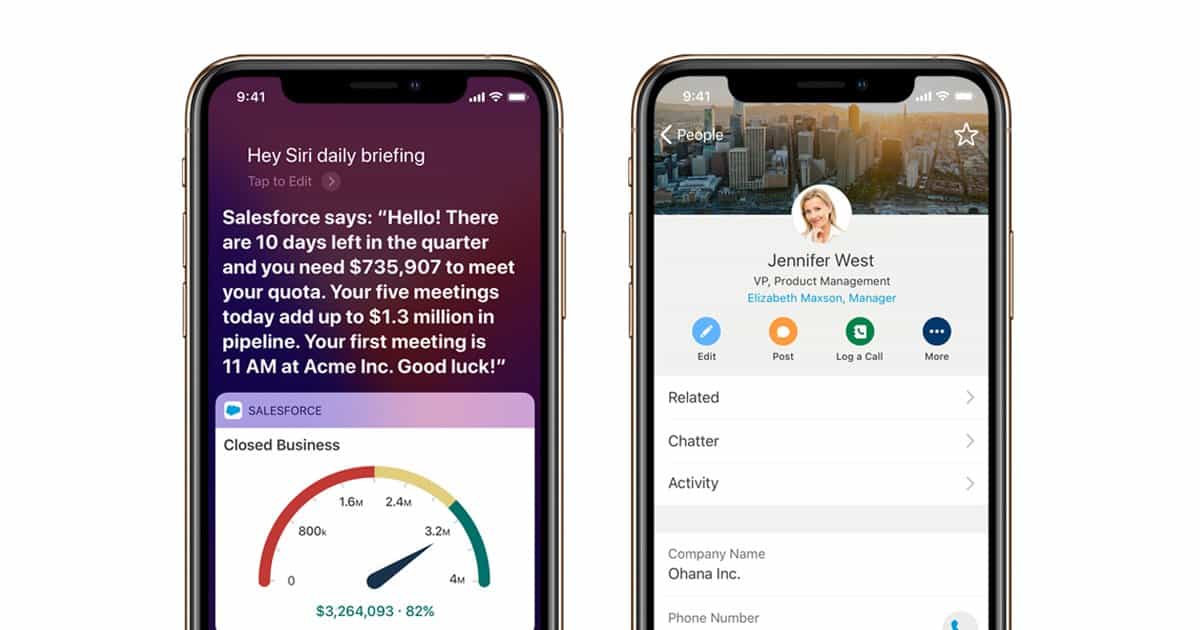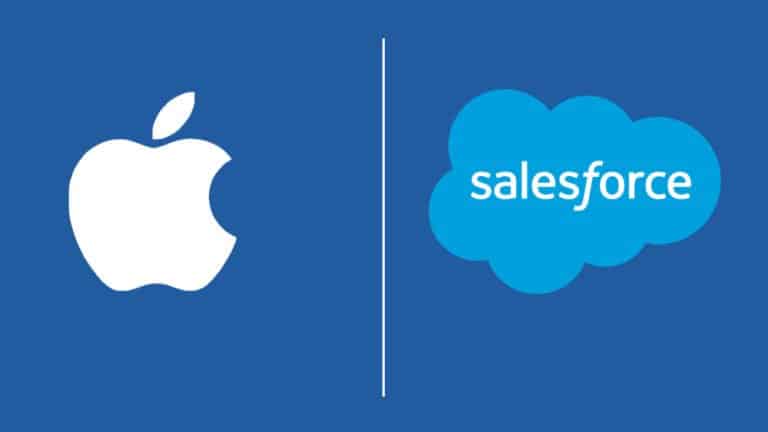Marc Benioff, one of Salesforce’s CEOs, said the iPhone and iPad are the best business devices in the world. Salesforce has been working exclusively with Apple since last year to maximize the Salesforce experience on Apple. Apple helps Salesforce develop and optimize its apps. Marriott hotels are one of the first to make good use of it.
Salesforce and Apple have joined forces to provide the best business experience on the iPhone and iPad. For Salesforce, it is important that its products and customer-developed features also work well on Apple mobile devices. To ensure that this experience is taken to the next level, an exclusive partnership has been in place since last year.
In concrete terms, this means that Apple is actively working with Salesforce to improve the Salesforce apps and provide them with the latest features. For example, shortly after the announcement, it was possible to use Face ID, Siri Shortcuts, Widgets and 3D Touch in combination with the Salesforce app, features that were fairly exclusive at the time. The companies have also been able to integrate the Salesforce Einstein AI with Siri voice commands so that Siri can be used to add tasks and notes to a customer or to update the customer data in the Salesforce CRM. Furthermore, the mobile experience has been greatly improved on iOS, which makes Salesforce functionalities come into their own.
Salesforce wants to win over Apple developers
Combining the popular Apple products with the most popular CRM solution creates a powerful collaboration. The popularity of Apple’s products also means that it has a large developer community. Salesforce would like to see some of these developers become more involved in Salesforce because there are opportunities for both parties. Developers can make good money developing iOS apps that can work with or integrate with Salesforce, while Salesforce benefits from good iOS apps that improve the customer experience and add capabilities to their products. For Apple, it’s a way to stay in the sights of business customers.

To win over the developers who work with Apple, Salesforce has developed a Mobile SDK that allows iOS apps to connect to the Salesforce platform easily. This SDK is also fully optimized for Swift, Apple’s newest programming language for developing apps. In addition, Salesforce is making new free trails available on Trailhead (courses) to learn how to use the Salesforce Mobile SDK.
Optimising user experience
When Apple and Salesforce presented this partnership last year, there were no really impressive or telling examples. It was, therefore, difficult to interpret this collaboration. A number of Salesforce customers have now started to work on this, and there are examples of users who are achieving good results thanks to this collaboration.
A good example of this is Marriott hotels. They have chosen to use the Apple Homepod speakers in their hotel rooms, which means that guests can now adjust the temperature in their room, order food (room service) or even order a taxi using voice. That doesn’t sound so exciting at first. You can probably do that at home with Alexa or Google Home as well, but all this is linked to the Salesforce environment of the Marriott. The food that is ordered can be billed automatically in the room, a preferred temperature can be stored in a customer profile, and the next time you visit the Marriott, the hotel can set the guest’s room to the same temperature. These are small things, but they make the customer and employee experience just a little bit better.
We are waiting for new examples of customer cases. In any case, we see plenty of opportunities, also in other verticals. What about airlines that have to rebook or check-in people? In the retail sector, too, customer satisfaction can be significantly increased with the right device and the right application. Suppose a customer returns with a defective product to a shop assistant, who can then collect all the information about the transaction directly on a mobile device, and also take action. Then any dissatisfaction or anger on the part of the customer can quickly be turned into satisfaction. This includes customer details and the transaction, but also any stock of a replacement item or the possibility of ordering the product and being able to report on the delivery time immediately. The mobile device ensures that the shop assistant can directly address the customer and the software must then ensure the best experience for the customer. This can be done via the mobile SDK for iOS, but also via the low-code/no-code platform Salesforce Lightning.

Apple’s premium image helps enterprises with better customer experience
Apple has always focused on premium products with good user experience. Unlike Android, it has never focused on the lower end of the market. This is something that encourages companies like Salesforce and IBM to enter into exclusive partnerships with Apple. For Apple, it’s the way to conquer the enterprise market. The brands and products reinforce each other.
The enterprise organizations have the guarantee that Apple’s products work well, that the user-friendliness and the complete experience have been well thought out. If they can pass this on to the software they provide, you get a good, complete experience that has value.
That doesn’t mean that Salesforce doesn’t support Android, because it does. The market share of Android is so huge that it will have to be. But because of the great diversity in Android devices, it will rather recommend Apple for the best customer experience. As long as it concerns the Salesforce application, the difference will not be very big, but as soon as you want to involve customers in the process, it becomes a different story.
